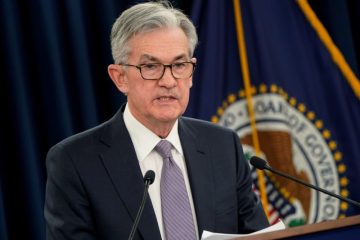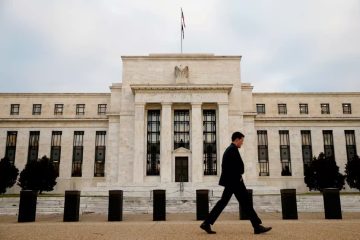Selling US bonds is becoming more difficult

Investors are becoming increasingly concerned that the market would have difficulty handling a large influx of government debt due to a string of underwhelming auctions for U.S. Treasurys.
The selloff was triggered by an inflation report that exceeded expectations, and it became more intense during the week due to weak demand for a $39 billion sale of 10-year Treasurys. Investors demonstrated a lackluster level of interest in auctions for three-year and 30-year Treasurys.
They are becoming increasingly convinced that inflation is not completely under control and that the Federal Reserve will maintain interest rates at historically high levels for several months, if not years. The 10-year yield, which serves as the standard for interest rates on many types of loans such as mortgages and corporate loans, concluded the week at approximately 4.5%, close to its peak levels since reaching 5% in October.
Simultaneously, the government is prepared to sell approximately $386 billion worth of bonds in May. This relentless activity is anticipated to persist regardless of the outcome of the presidential election in November, according to Wall Street. Although the possibility of a failed auction is quite rare and would result in extended instability, there are concerns that an excess supply of Treasurys might disrupt other sectors of the markets, increase the cost of government borrowing, and have a negative impact on the economy.
There has been a significant change in the prevailing market storyline. According to James St. Aubin, the chief investment officer at Sierra Mutual Funds, the CPI report has altered everyone’s perception of the direction of Fed policy.
The government finances its activities through the sale of highly secure bonds to investors and dealers at regular auctions. The issuance of Treasury bonds has significantly increased since the start of the pandemic. During the initial quarter of 2024, the United States managed to sell a staggering $7.2 trillion worth of debt, marking the highest quarterly amount ever recorded. This exceeds the second quarter of 2020, during which the government was providing funding for a surge of Covid-19 stimulation. Furthermore, it is worth noting that this builds upon the previous year’s issuance of $23 trillion in Treasurys, resulting in a cash inflow of $2.4 trillion after accounting for the maturity of bonds.
The magnitude of the sales has increased in tandem with the market for U.S. debt. In response to lackluster demand at a succession of auctions in the previous year, the Treasury Department alleviated worries by mostly using short-term debt to finance America’s deficit. The Federal Reserve’s indication of a shift towards looser monetary policy partially contributed to the reassurance of investors on the Treasury’s plan, as expectations of imminent interest-rate cuts provided support.
Currently, those aspirations are diminishing, and it is anticipated that the Treasury will disclose its borrowing strategies for the third quarter by the conclusion of April. According to the impartial Congressional Budget Office, the deficit is projected to rise from 5.6% to 6.1% of the United States’ gross domestic product over the next ten years. The amount of debt held by the public is projected to increase from $28 trillion to $48 trillion, compared to $13 trillion a decade ago.
Financial analysts on Wall Street do not anticipate the Treasury Department to increase the magnitude of auctions for longer-term notes and bonds until the following year. However, the government must also address the task of refinancing a significant portion of its bonds. Approximately one-third of the total outstanding U.S. debt, amounting to a staggering $8.9 trillion, is scheduled to reach maturity in the year 2024, as stated by Torsten Slok, the chief economist of Apollo Global Management.
Investors are also monitoring the potential increase in revenue from tax season, which will contribute to the financial resources of the United States in the upcoming weeks.
According to Thomas Tzitzouris, the head of fixed-income research at Strategas, our liquidity has been decreasing due to the withdrawal of funds by individuals and enterprises to meet their tax obligations. Currently, we are experiencing a temporary period of instability in the bond market, which is allowing yields to increase without much constraint.
The Federal Reserve is expected to provide one form of help. The minutes from the Federal Reserve’s March meeting, which were released last week, indicate that policymakers are considering reducing the rate at which they are reducing the central bank’s substantial bond holdings, which were acquired to support the economy. They are expected to decrease the monthly rate at which they allow Treasurys to reach maturity to $30 billion, which is half of the present pace of $60 billion.
Quantitative tightening, also known as balance-sheet runoff, aims to reduce the reserves in the banking system and boost the market’s ownership of government debt. As the Federal Reserve reduces and plans to eventually end that program, investors will need to take on a smaller portion of Treasury assets. This might bolster bond prices and alleviate some of the increasing pressure on yields.
Another contributing element bolstering the demand for Treasurys is the abundance of savings among global investors coupled with a limited number of effective investment opportunities. Both the eurozone and Japan have current-account surpluses, indicating that they generate more revenue from trade than they expend on imports. Treasurys offer investors a secure option to store their funds while also earning a dividend of over 4%. In addition, they provide a convenient method for investing money earned in US dollars from trading with the United States.
Both the euro and yen are depreciating compared to the dollar, partly due to the Bank of Japan maintaining low interest rates and investors anticipating the European Central Bank to shortly reduce them further. This could lead to a rise in demand for U.S. debt, since Treasury yields continue to remain higher compared to other global options.
Many investors are optimistic that as long as inflation continues to move towards the Federal Reserve’s target of 2%, Treasury rates will stay below 5%. However, there are concerns that the increase in new Treasurys may worsen the already unstable markets, especially if inflation remains persistent. Following the release of the CPI statistics and a disappointing auction on Wednesday, the 10-year yield experienced its largest single-day increase since 2022, surging by about 0.20 percentage point.
According to Sierra’s St. Aubin, if we continue to observe high inflation rates, it will cause many individuals to remain inactive or uninvolved.









